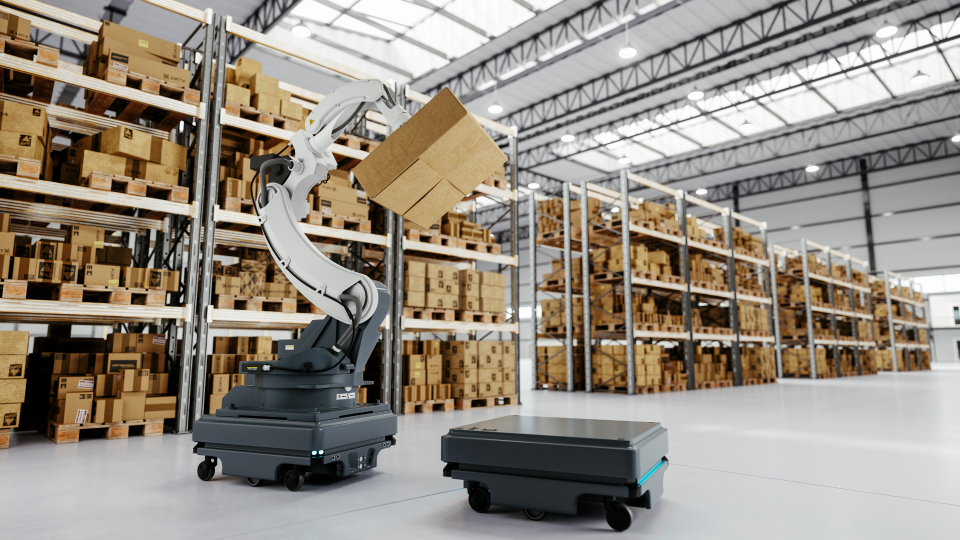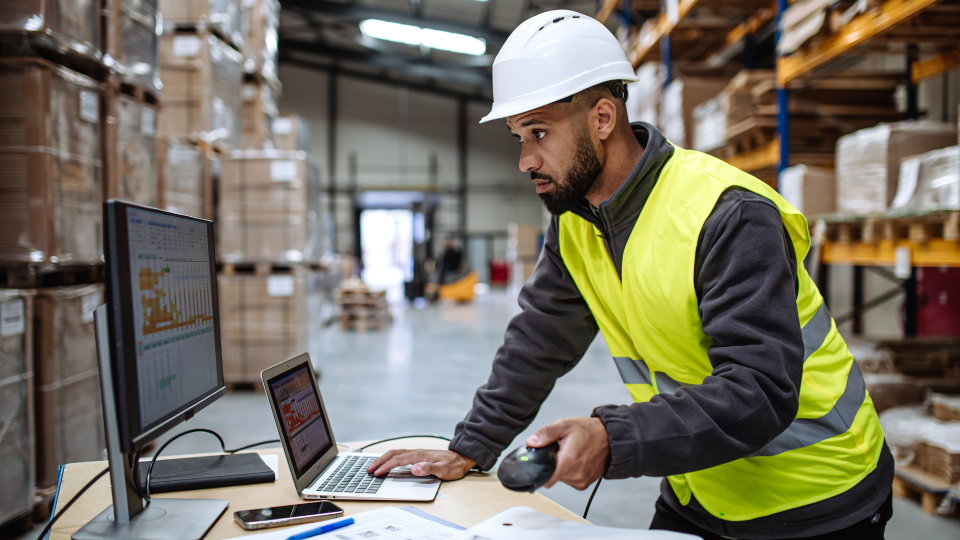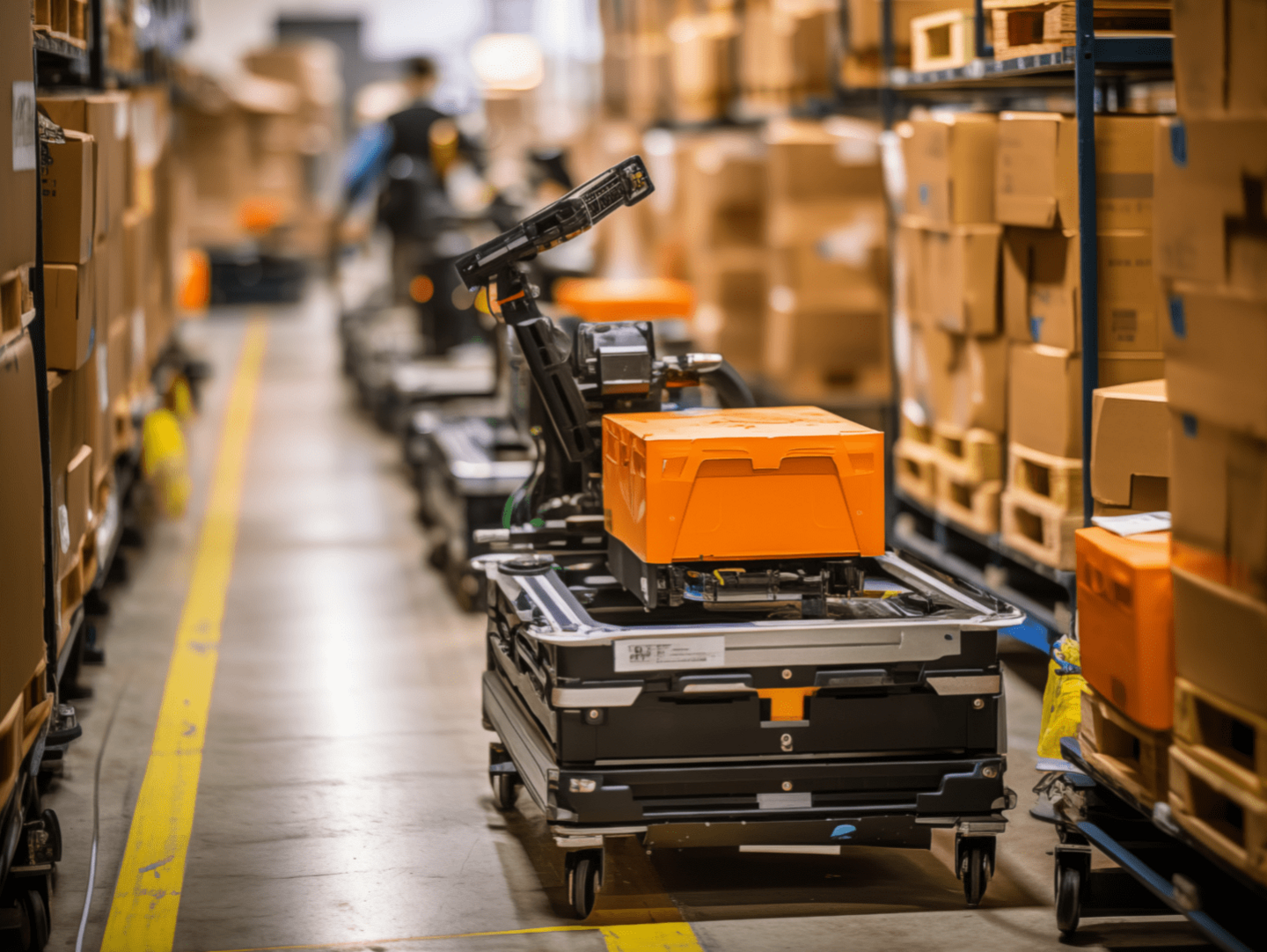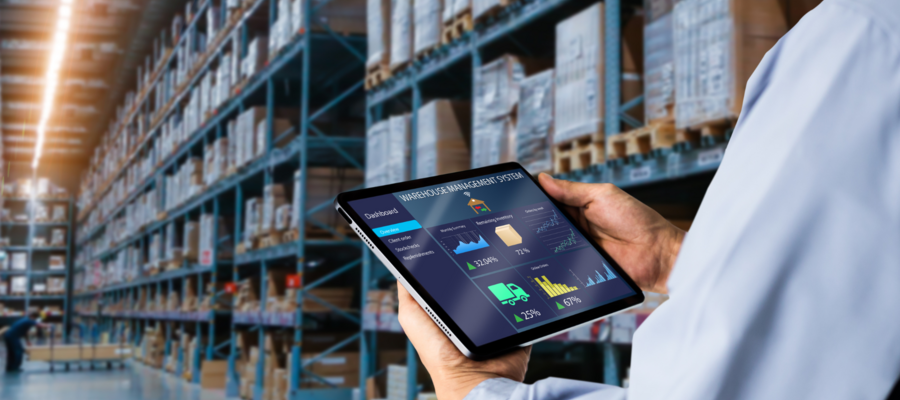Imagine walking into a warehouse where robots smoothly navigate between shelves, picking orders with pinpoint accuracy while AI systems predict exactly what customers will want next week. While this sounds like science fiction, it's actually happening right now in logistics centres across the UK.
Automation in logistics is transforming how goods move from warehouses to your doorstep, with companies reporting cost reductions of up to 30% and dramatically faster delivery times.
As a recruitment specialist working in the logistics sector, I've watched this transformation unfold firsthand. The conversations I have with candidates and clients have shifted recently, and rather than fearing job losses, we're seeing an exciting evolution where automation creates new skilled roles while handling the repetitive tasks that nobody particularly enjoyed anyway.

What is Automation in Logistics?
At its core, automation in logistics means using technology - whether that's software, robots, or AI - to handle tasks that humans previously did manually. Think of it as giving your logistics operations a digital brain and mechanical muscles that work together to move goods more efficiently.
The automation process isn't just about installing a robot and walking away. It's about creating intelligent systems that can make decisions, adapt to changing conditions, and communicate with each other. When you order something online and it arrives the next day, you're experiencing the result of multiple automated systems working in harmony.
Real-World Examples of Automation in Supply Chain Operations
In warehousing, you'll find Automated Storage and Retrieval Systems (AS/RS) that store products in high-density areas and retrieve them when needed. These systems can increase storage capacity by up to 80% in the same floor space.
Transport companies use route optimisation software that considers traffic patterns, delivery time windows, and fuel efficiency to plan the most effective routes.
The different types of automation processes range from simple conveyor belt systems to sophisticated AI algorithms that learn from past data to make future predictions. Some warehouses use Automated Guided Vehicles (AGVs) that follow fixed routes, while others deploy Autonomous Mobile Robots (AMRs) that navigate dynamically around obstacles.
How AI is Transforming Logistics Operations
AI in logistics goes far beyond simple task automation. The technology analyses patterns in massive datasets to make predictions and decisions that would be impossible for humans to process quickly enough.
Predictive analytics helps companies forecast demand more accurately than traditional methods. Logistics managers make use of AI systems that can predict seasonal fluctuations, regional preferences, and even the impact of weather on customer behaviour. This means they can stock the right products in the right locations before customers even know they want them.
Predictive maintenance is another game-changer. Rather than waiting for equipment to break down, AI monitors machinery performance and flags potential issues before they cause costly disruptions.

The Primary Benefits of Automation in Logistics
The biggest benefit of automation for supply chains is the combination of cost reduction and improved service quality. Companies typically see their return on investment within 18 to 36 months, which speaks to the significant impact these systems can have.
Cost savings come from multiple sources. Labour costs decrease as automated systems handle repetitive tasks more efficiently than human workers. Error rates drop dramatically - automated inventory systems achieve 99.99% accuracy compared to the 95-98% accuracy of manual processes. This reduction in mistakes means fewer returns, less waste, and happier customers.
Perhaps most importantly, automation allows companies to scale operations quickly during peak periods without the stress of hiring temporary staff or overworking existing teams. The systems can operate 24/7, turning traditional downtime into productive hours.
The Future of Automation in Logistics
Looking at logistics trends for 2025, we're seeing rapid acceleration in automation adoption. Over half of UK fulfilment centres are expected to have AI-powered automation by 2025, rising to 85% by 2030.
The next big thing in automation is the integration of autonomous vehicles into everyday logistics operations. The UK's Automated Vehicles Act 2024 provides the legal framework for autonomous vehicles to operate on public roads, moving beyond trial phases to practical deployment. This could revolutionise last-mile delivery by enabling 24/7 operations without driver fatigue limitations.
Micro-fulfilment centres are another emerging trend. These smaller, urban warehouses bring inventory closer to customers, enabling same-day or even hourly delivery in major cities. They rely heavily on automation to operate efficiently in limited spaces.
The future of logistics in the UK looks particularly bright. The market is projected to reach $251.8 billion (£186 billion) by 2030, with warehousing and distribution services showing the fastest growth. The UK's proactive approach to automation legislation and investment in infrastructure positions it well to lead rather than follow global trends.
Career Opportunities in Automated Logistics
Here's where the conversation gets really interesting from a recruitment perspective. Automation isn't eliminating logistics jobs - it's transforming them into more skilled, better-paid roles that many people find more satisfying.
Traditional warehouse workers are becoming automation technicians who maintain and troubleshoot complex systems. Logistics coordinators are evolving into data analysts who interpret system outputs and optimise operations. Forklift operators are transitioning to control room operators who manage fleets of automated vehicles.
The skills in demand reflect this shift towards higher-level work. Technical skills like data analysis, system troubleshooting, and understanding of warehouse management software are highly valued. Equally important are soft skills like problem-solving, adaptability, and communication, as workers increasingly collaborate with both technology and diverse teams.
The career progression paths in automated logistics are expanding rapidly. Entry-level positions in system monitoring can lead to specialisation in areas like predictive analytics, autonomous vehicle management, or AI system optimisation. Senior roles like Automation Project Managers and Logistics Technology Strategists are emerging as companies scale their automation efforts.
Making the Most of Automation Opportunities
The logistics industry's automation revolution presents opportunities for everyone - from businesses looking to improve efficiency to professionals seeking rewarding careers in a growing field. The key is understanding that this technology works best when it complements human expertise rather than replacing it entirely.
Successful automation projects combine the precision and endurance of machines with human creativity, problem-solving ability, and relationship management skills. The companies thriving in this new landscape are those that recognise automation as a tool to empower their workforce, not replace it.
Whether you're a logistics professional looking to develop new skills or a company planning your automation journey, having the right expertise and connections can make all the difference. At Select Recruitment, we understand both the technology reshaping logistics and the talent needed to succeed in this evolving industry. If you're ready to explore opportunities in automated logistics or need help building a team for your automation projects, we're here to help you navigate this exciting future.
Get in touch with our team today to discuss your future in this exciting and evolving sector.
Author:




